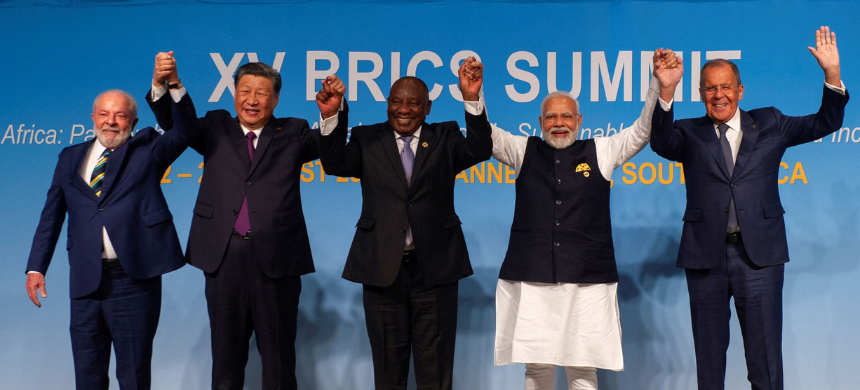The recent BRICS summit in Kazan from October 22 to 24 attracted global attention as the alliance demonstrated its expanding reach. With a substantial increase in membership, BRICS now represents almost half of the world’s population and more than a quarter of global GDP. This year’s summit highlighted crucial discussions around de-dollarization and developing an alternative to the SWIFT payment system to reduce reliance on the U.S. dollar.
Read More: Nawaz Sharif Sees SCO Summit Fostering Pakistan-India Ties
The group’s expansion in 2023, however, has introduced new dynamics, as internal tensions among members pose challenges to BRICS’s objectives. Relations between India and China remain tense, while rivalries between Iran and Saudi Arabia add complexity. New members Egypt and Ethiopia are also embroiled in disputes, underscoring divisions within the 36-member bloc.
Despite these challenges, the summit has made notable diplomatic strides. Turkey, a NATO member, has shown interest in joining BRICS, while Pakistan’s Finance Minister, Muhammad Aurangzeb, has signaled strong interest in Pakistan’s membership. Russian President Vladimir Putin announced that over 30 countries have applied for membership, with 13 formally declaring partnerships.
On a positive note, the summit provided an opportunity for rapprochement between India and China, as both countries agreed to a military disengagement at their contested border. Although BRICS may still be distant from fully challenging the International Monetary Fund’s dominance or achieving complete de-dollarization, it has marked a new phase in its influence over global political, economic, and diplomatic affairs.











